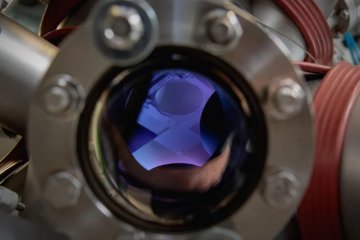All genres
161.
Talk
High resolution strain mapping coupled with EBSD during in-situ tension in SEM. Interdisciplinary Center for Advanced materials Simulation (ICAMS), Ruhr-Universität Bochum, Bochum, Germany (2013)
162.
Talk
Microstructural and Mechanical Characterization of Cold Work Effects in GUM Metal. 9th International Conference on Advances in Experimental Mechanics, Cardiff, UK (2013)
163.
Talk
Stress-strain partitioning in martensitic-ferritic steels analyzed by integrated full-field crystal plasticity simulations and high resolution in situ experiments. GDRi CNRS MECANO General Meeting on the Mechanics of Nano-Objects, MPIE, Düsseldorf, Germany (2013)
164.
Talk
Coupled high resolution strain and microstructure mapping based on digital image correlation and electron backscatter diffraction. IMPRS-SurMat Seminar, Meschede, Germany (2013)
165.
Talk
Nanostructuring 1 Billion Tons: Combining Rapid Alloy Prototyping, Multiscale Models, and Characterization for Advanced Manufacturing. 2nd World Congress on Integrated Computational Materials Engineering, Salt Lake City, UT, USA (2013)
166.
Talk
Design of Adaptive Structural Materials. CM-Workshop, Balk, Netherlands (2013)
167.
Talk
Quantative damage analysis & in-situ testing to investigate cut-edge failures in AHSS. Cut-edge behavior and damage resistance of AHSS, Maizières-lès-metz, France (2013)
168.
Talk
Influence of hydrogen on dual-phase steel micro-mechanics. 2nd International Workshop on Physics-Based Modelling of Material Properties & Experimental Observations, Antalya, Turkey (2013)
169.
Talk
Design of Adaptive Structural Materials: A coupled theoretical-experimental approach. 10th Materials Day, Bochum, Germany (2012)
170.
Talk
Characterization of microstructural deformation mechanisms at high strain rates. 12th Materials Science & Technology (MS&T) Conference, Pittsburgh, PA, USA (2012)
171.
Talk
Multi-scale characterization of the giant fault mechanism in Ti–Nb based gum cast alloys. 12th Materials Science & Technology (MS&T) Conference, Pittsburgh, PA, USA (2012)
172.
Talk
Characterization of microstructural plasticity mechanisms in TNTZ-O alloys. Materials Science Engineering (MSE), Dramstadt, Germany (2012)
173.
Talk
SMARTMET project: Towards breaking the inverse ductility-strength relation. ThermoCalc Workshop, Aachen, Germany (2012)
174.
Talk
Microstructural analysis of strain rate sensitivity of dual-phase steel. Materials Science Engineering (MSE) 2012, Darmstadt, Germany (2012)
175.
Talk
Multi-scale (in-situ) investigation of Adaptive Structural Materials. École Seminar, Nationale Supérieure des Mines de St-Étienne, St-Etienne, France (2012)
176.
Talk
In-situ investigations of small strain plasticity in dual-phase steel. 23rd International Congress of Theoretical and Applied Mechanics (ICTAM), Beijing, China (2012)
177.
Talk
Designing nanostructured metallic bulk alloys via first principles simulations and atomic scale characterization: The basis of modern manufacturing. NIMS Conference 2012, Tsukuba, Japan (2012)
178.
Talk
A Virtual Laboratory to Derive Mechanical Properties of Complex Microstructures. GLADD-Meeting, Aachen, Germany (2012)
179.
Talk
Evaluation of geometrically necessary dislocations density (GNDD) near phase boundaries in dual phase steels by means of EBSD. International Conference on the Textures of Materials, ICOTOM 16, Bombay, India (2011)
180.
Talk
Detailed observation of martensite transformation and twinning in TRIP and TWIP steels using advanced SEM diffraction techniques. ICOMAT 2011, Osaka, Japan (2011)











